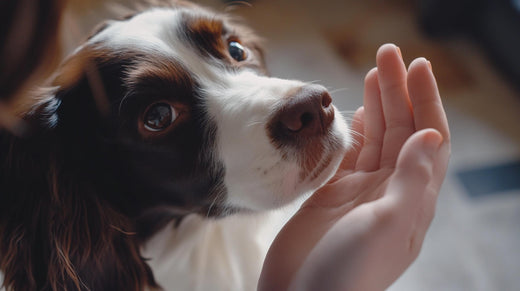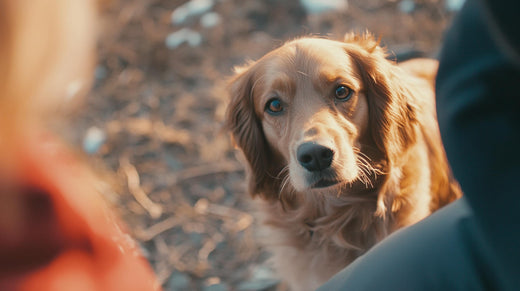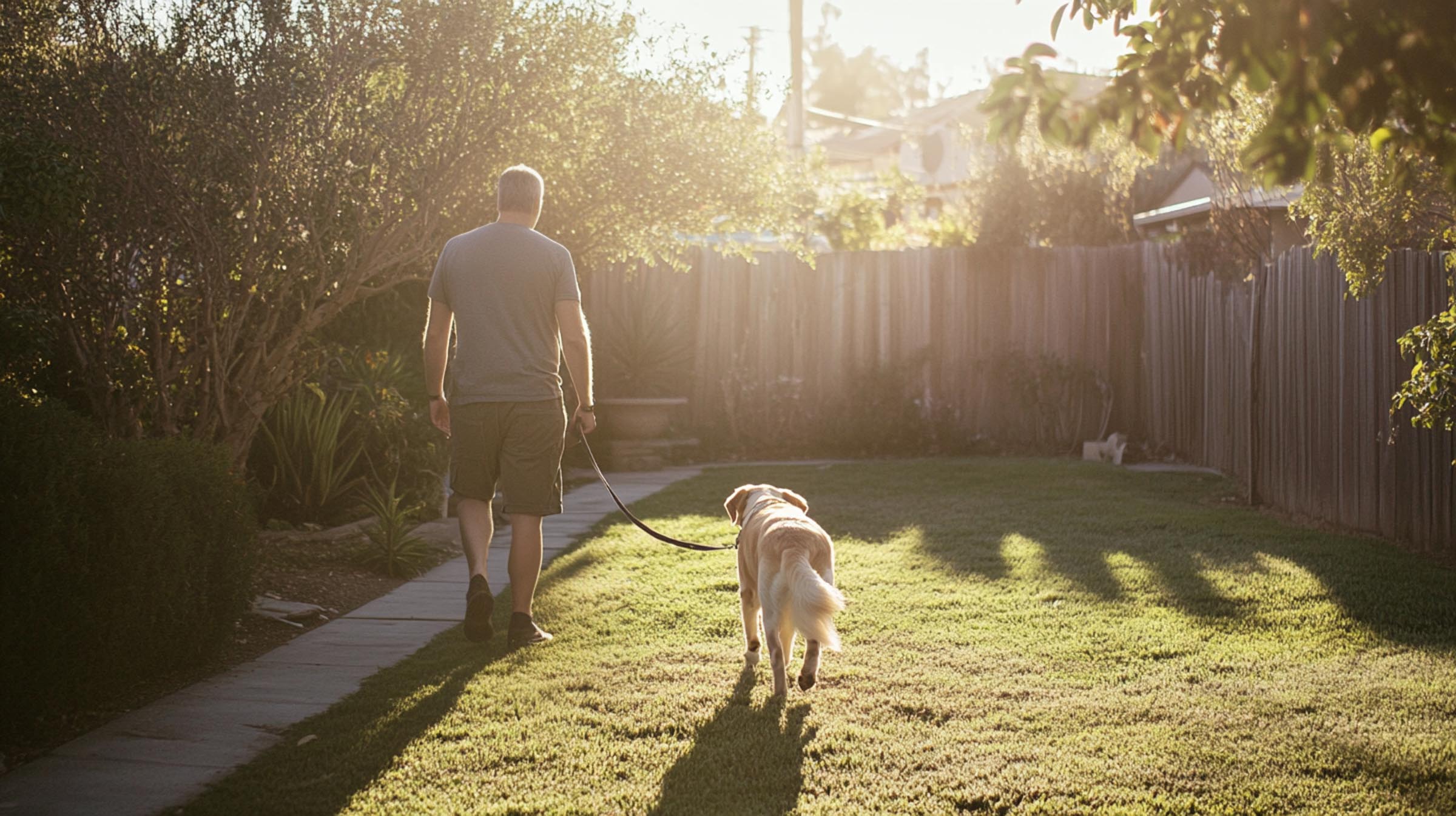Hand targeting is a powerful training technique that teaches your dog to touch their nose to your hand on cue. This not only helps redirect your dog’s focus when they’re pulling but also encourages them to move back toward you and stay close. It’s a great way to guide your dog back into the correct walking position, making walks more manageable and controlled.
Step 1: Start Indoors
Begin in a distraction-free environment, like your living room, where your dog can focus solely on you. This makes learning easier, especially if your dog is not familiar with this type of training.
Step 2: Introduce Your Hand as the Target
- Present Your Hand: Hold out your hand, palm open, a few inches away from your dog’s nose. Make sure your fingers are relaxed and your palm is facing your dog.
- Reward the Initial Curiosity: Most dogs will naturally move to sniff your hand. As soon as your dog’s nose touches your hand, mark the behaviour by saying “yes” or using a clicker, then immediately reward them with a treat.
- Repeat Several Times: Practise this step until your dog consistently touches your hand with their nose when you present it.
Step 3: Add a Verbal Cue
Once your dog reliably touches your hand, it’s time to introduce a cue word, like “touch” or “target.”
- Say the Cue: Right before you present your hand, say your chosen cue.
- Mark and Reward: When your dog touches your hand, immediately say “yes” or use your clicker, followed by a reward.
- Repeat and Practise: Keep practising until your dog begins to associate the word “touch” with the action of targeting your hand.
Step 4: Gradually Increase the Distance
Once your dog understands the command, start increasing the distance between your hand and your dog. Hold your hand a little farther away each time, encouraging them to move toward your hand to touch it.
- Reward Appropriately: Continue marking and rewarding each successful touch to keep reinforcing the behaviour.
- Change Positions: Practice in different positions—standing, sitting, or even while you’re walking slowly—to help your dog generalise the behaviour in multiple scenarios.
Step 5: Practise Outdoors
When your dog is reliably targeting your hand indoors, gradually move the training outside, where there are more distractions. Start in a quiet area, like your backyard, and slowly progress to more stimulating environments, like parks or sidewalks.
- Use Treats Wisely: If your dog is distracted, use high-value treats to keep their focus on the hand target exercise.
- Stay Patient: Don’t rush to more challenging environments until your dog consistently succeeds in the current one.
Step 6: Use Hand Targeting During Walks
Once your dog has mastered hand targeting in different environments, you can start using it during walks. Here’s how it helps:
- Redirect Focus: If your dog starts pulling, use the “touch” command to guide them back toward you. This immediately redirects their attention away from whatever was causing them to pull.
- Keep Them Close: If your dog drifts too far ahead or to the side, use hand targeting to bring them back to your side, keeping them in the proper walking position.
- Maintain Engagement: Periodically ask your dog to target your hand during the walk to keep them focused and engaged with you, reducing distractions that lead to pulling.
Troubleshooting Tips

- If Your Dog Ignores Your Hand: Start by holding a treat in your hand to encourage them to touch it. Once they do, mark and reward. After a few successful repetitions, try without a treat.
- If Your Dog Gets Distracted: Make sure you’re in a calm environment with fewer distractions. Gradually work your way up to more stimulating situations as your dog improves.
- Reward Timing: Be quick to mark the behaviour as soon as your dog’s nose touches your hand. Delayed rewards can confuse your dog about which action is being reinforced.
Why Hand Targeting Works
- Redirection: Hand targeting provides a simple, effective way to redirect your dog’s attention away from distractions.
- Engagement: It keeps your dog focused on you, making them less likely to pull or get distracted by their surroundings.
- Reinforcing Good Positioning: It encourages your dog to stay close to you, which is crucial for loose leash walking.
Conclusion
Incorporating hand targeting into your walks not only helps with leash pulling but also strengthens the bond between you and your dog. It turns walks into interactive, rewarding experiences where your dog learns to pay attention to you and follow your lead.




Leave a comment
This site is protected by hCaptcha and the hCaptcha Privacy Policy and Terms of Service apply.